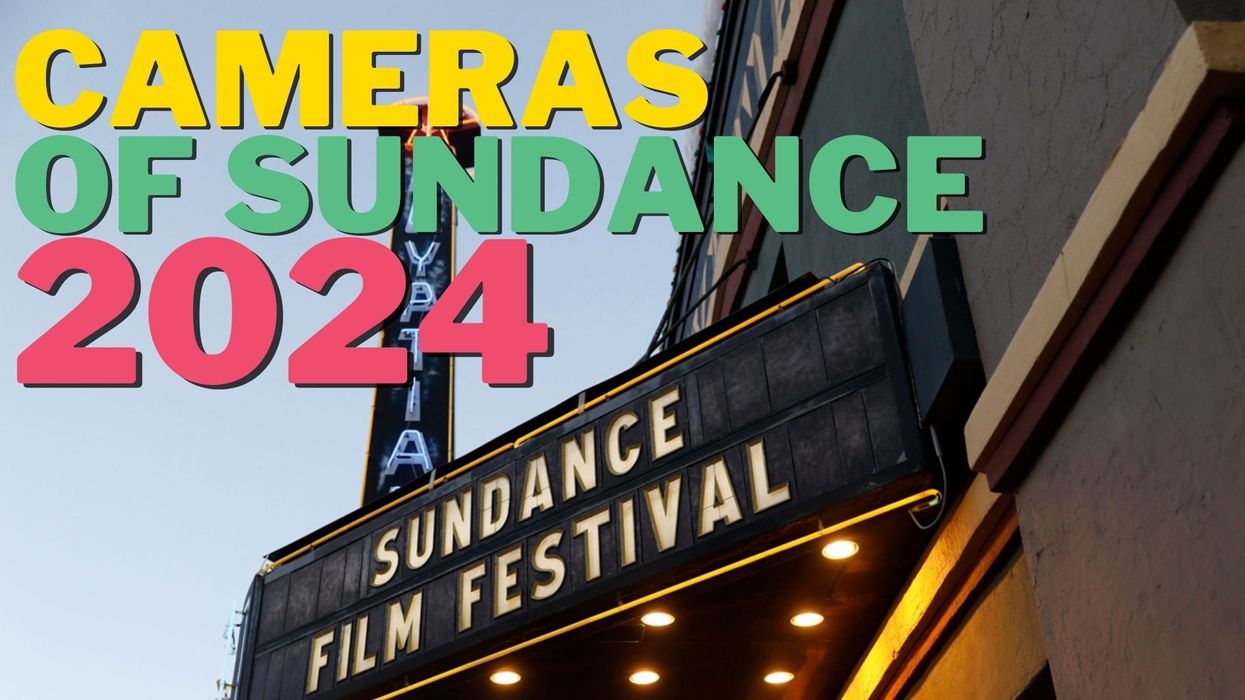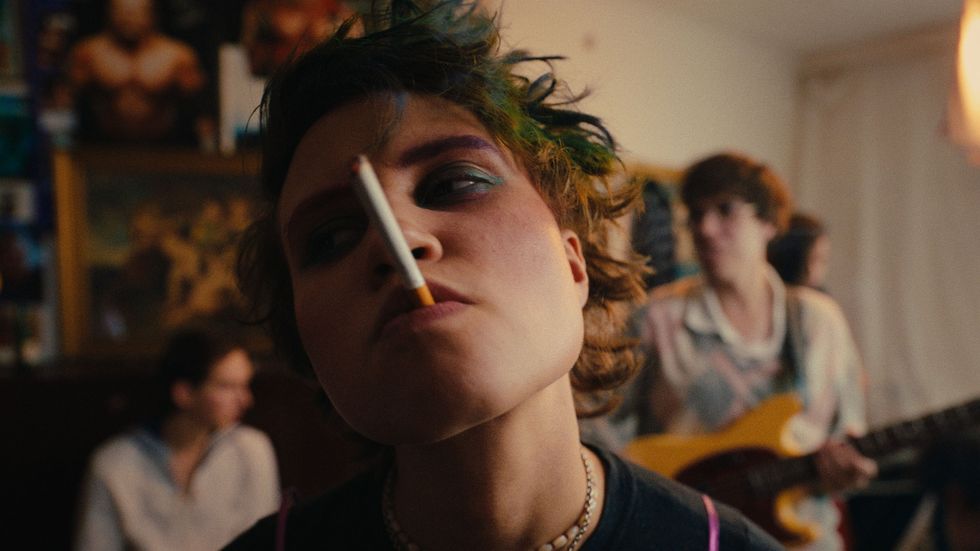The Cameras of Sundance 2024 Shed Light On How Indie Filmmakers Have Evolved
Discovering what tools festival filmmakers are using is an interesting look into the indie landscape.

Sundance 2024 is here, and the festival has announced a total of 91 projects for this year's slate. Between shorts, feature films, and documentaries, there's a whole lot of talent coming to Park City.
Every year, we survey as many filmmakers as we can to better understand the tools they use and the approach they take to making their films.
This year, our survey consists of 47 projects that span all sorts of genres, and seeing the cameras they utilized (or didn't) sheds some interesting light on how independent films are created.
Let's dive in.
ARRI vs. Canon
Looking at last year's survey, it was clear that filmmakers chose ARRI as their preferred camera system. 60% of the 69 cameras used for Sundance projects in 2023 were ARRI systems.
Yet this year, there is a stark difference in what filmmakers choose to use.
Out of 47 projects that were surveyed, a total of 67 camera systems were used, and Canon has become a preferred choice for filmmakers coming in at 22%.

This year's picture is drastically different from last year.
While ARRI systems were still the go-to choice for narrative film (coming in at 19% for Sundance 2024), Canon cinema cameras and DSRLs were widely used for this year's festival projects.
Following those two camera manufacturers, Sony and RED closely followed with 13% and 10%, respectively.
This is also an interesting change from last year, as no filmmakers surveyed in 2023 had used a RED system for their project. 2024 changed all that, with the RED Komodo being a popular choice amongst filmmakers, most likely due to its compact size and attractive price point.
Blast From The Past
Yet the most intriguing thing to see from this year's survey results was the use of film, animation, and archival footage. Over 18% of filmmakers utilized all sorts of unique camera systems, from Super16 Bolex cameras to Super8, Panasonic and Sony camcorders, and even miniDV.
It seems as we move further and further away from older technology, the more attractive it ends up being, either due to aesthetics, workflow, or nostalgia.
What Filmmakers Shared With Us
One project in particular was really interesting to dig into (oh yes, pun intended).
DIG! XX
DIG! XX is a rerelease of the original film but with 30 minutes of additional footage. It covers the bitter rivalry of two dueling rock bands—The Dandy Warhols and The Brian Jonestown Massacre.
The film was crafted from 2,500 hours of footage shot on a myriad of different formats.
"We shot 2,500 hours for the original DIG! in every format available—from regular 8MM video to Hi-8 video, to Mini DV, to HD, as the cameras evolved throughout our production period—which spanned from 1996-2003," said producer and editor, David Timoner.

Still from DIG! XX
Courtesy of Sundance Institute
The team even created their own unique camera system to shoot in poorly lit clubs. "We purchased a super new state-of-the-art spy camera (at the time) from a spy shop," Timoner said. "We jerry-rigged (it) with a lav mic gaffer taped onto it and ran it line-in to a little regular 8MM video camcorder to be able to shoot in low light - which was crucial to capturing verité of the bands in dark clubs and at night."
From its beginning in 1996, DIG! XX is a fascinating look into how the narrative evolves over time through the use of different image-capture tools.
'As We Speak'
Looking at a more modern film that utilized the same approach, As We Speak is a documentary from Sundance alum J.M. Harper, who previously edited the Sundance film JEEN-YUHS: A KANYE TRILOGY. Yet, as DIG! XX utilized different tools out of necessity, As We Speak leans on different cameras to support it's documentary narrative.
The film focuses on the Bronx-based rap artist Kemba, who explores the weaponization of rap lyrics by US law enforcement.
"We shot on Sony Venice, Super8mm, and 16mm Bolex," Harper said. "To differentiate between the varied character perspectives in the film."

Still from As We Speak
Courtesy of Sundance Institute
"It's a story told from a rap artist's POV, which we wanted to differentiate from people "outside" the world of hip hop—academics, politicians, attorneys, and music industry folks," Harper continued.
"The documentary blends the world of fiction and non-fiction (in the same way that hip hop does), so we wanted the visual language of the documentary to leave breadcrumbs as to what might be real and what might be imagined."
Blending different formats, be it in older technology based on magnetic tape or just traditional film and digital, has become a common workflow for filmmaking and documentary projects. Not only does it allow for an expanded palette, but it provides filmmakers with more tools to create the vision they see.
'Conbody VS Everybody'
Conbody VS Everybody was filmed over eight years and is a six-part documentary series that focuses on Coss Marte and his gym, CONBODY, which was inspired by workouts that he created and developed while in prison.
This film leaned heavily on the Canon cinema camera ecosystem, which allowed the team to maintain a cohesive image but continue to update their tools as needed.
"One of my goals is to create a cinematic look while remaining flexible and nimble in the field," Said Eric Phillips-Horst, DoP for the series. "The majority of Conbody VS Everybody was shot on Canon EOS Cinema cameras. The project started shooting in 2014 so the C100 Mark 1 was the first camera used. Since we shot for over eight years, the camera systems progressed as time went on." Phillips-Horts explained.
"The small size of the C100 was an asset for being nimble in tight spaces, allowing access and intimacy as we built relationships with the CONBODY team. Then we progressed to C300 Mk II as production scaled up, and the majority of the film was shot on this camera. We finished out the project with pick-ups on the C70."

Still from Conbody VS Everybody
Courtesy of Sundance Institute
'Dream Creep'
The short Dream Creep was one of the film that utilized an ARRI camera system, but director Carlos Lopez opted to use the ARRI Classic.
"We used an Alexa Classic fitted with Cooke Speed Panchro lenses," Lopez said. "We wanted these particular vintage lenses for the soft, textured effect they gave; which was ideal for the visual dreamscape we were trying to create."
While that camera system is over a decade old now, it's still a powerful tool for creatives to use. And now that it's so much more affordable on the used market, filmmakers can obtain that ARRI look without having to pay ARRI prices.

Still from Dream Creep
Courtesy of Sundance Institute
'It's What's Inside'
On the other end of the spectrum, It's What's Inside is one of the few films that opted to go with the new ARRI Alexa 35. This was paired with Leica Summilux C primes and Angenieux Optimo Zooms to create the necessary visual style for the film.
Greg Jardin directed the film and was also the writer, editor, and VFX artist.
"We wanted to give the film a classic filmic look that harkened back to films from the 70s and 80s," Jardin said. "The Summilux lenses are actually some of the cleanest lenses out there and at first seemed to be the opposite of what we needed, but due to the amount of image manipulation we did in post, we thought that shooting with a clean lens to rough it up later was the way to go."
When ARRI's new Super35 camera was released, it offered an immense amount of control over the image it produced. Creatives found a new image pipeline dedicated to fine-tuning the image, but also tools to help filmmakers bake in the image in-camera.

Still from It's What's Inside
Courtesy of Sundance Institute
'Bye Bye, Bowser'
Finally, Bye Bye, Bowser, a film directed by Jasmin Baumgartner, utilized the RED Komodo with Leica R Objektive. These are photography lenses first, but they provide incredible Leica quality and character.
For Baumgartner, this choice in tools was all about saving money so she and her team could make the film for a super small budget.
"We used a setup owned by our DoP's to make our film work with just a little of money," Baumgartner said.
Bye Bye, Bowser was a film that went from idea to finishing production in just 7 to 8 weeks.
"We had the idea of the film on our last day at a lake in late summer, and we had our last day of shooting 7-8 weeks later," Baumgartner said. "It was very intense. We had to do it right now and borrowed 10K from friends having a successful business without knowing if we would get this money back later."

Still from Bye Bye, Bowser
Courtesy of Sundance Institute
What We've Learned
Filmmakers in the past few years now have access to some amazing and affordable tools. Between Canon's massive ecosystem, ARRI's new (and expensive) Super35 camera, and the RED Komodo, more and more creatives are able to achieve the imagery their story needs.
While we're seeing a huge range of cameras utilized for Sundance 2024 projects, it's clear to us that tools are no longer the foundation of a good project but the story that drives it.
Okay, we know that a good story should always be the most important part of a film or documentary, but good image-capture tools can elevate good stories into great stories.
Yet, when everyone is put on an even playing field, storytellers must work harder to stand out.
No Film School's coverage of Sundance 2024 is brought to you by Canon.
- Check Out What You Can Learn at the Canon Creative Studio During Sundance ›
- Check Out The Sundance 2024 Lineup ›
- Check Out What You Can Learn at the Canon Creative Studio During Sundance ›
- Lenses Of Sundance 2024 Show That Filmmakers Love Variety ›
- Who Won Sundance 2024? ›
- Sundance Recap ›
- Challenges 2024 Sundance creators tackled ›
- Sundance Announces 96 Projects Ahead of Their 2025 Fest | No Film School ›












